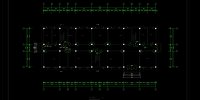六层5500平米武昌理工学院教学楼设计(建筑图结构图)(任务书,开题报告,论文说明书25000字,建筑图10张,结构图7张)
摘 要
本设计为武昌理工学院6#教学楼,整体采用框架结构,主体为6层,抗震设防烈度为7度,场地类别为2类场地。基本风压为0.35kN/m2,基本雪压为0.20kN/m2,屋盖均采用现浇钢筋混凝土结构。
本设计贯彻“实用、安全、经济、美观”的设计原则。按照建筑设计规范,认真考虑影响设计的各项因素。根据结构与建筑的总体与细部的关系。
首先确定结构布置方案,选取③轴线上的一榀框架进行设计计算。然后确定计算简图,进而确定框架承受的荷载,包括恒荷载、活荷载、地震荷载以及风荷载,在此基础上进行框架内力计算(利用D值法计算风荷载,利用底部剪力法计算地震荷载后再采用反弯点法计算水平荷载作用下的内力,采用分层法计算竖向荷载作用下的内力),进而进行内力组合,选取最不利的一组或几组内力进行配筋计算。除此之外,还进行了楼梯设计,基础设计。
【关键词】框架结构 内力计算 计算配筋 结构设计
Abstract
The design is a 6# teaching building of Wuchang Institute of Technology. The whole structure is frame structure, the main body is 6 stories, the seismic fortification intensity is 7 degrees, and the site category is No. 2. The basic wind pressure is 0.35 kN/m2 and the basic snow pressure is 0.20 kN/m2. The cast-in-situ reinforced concrete structures are used in the roofs.
This design carries out the design principle of "practical, safe, economical and beautiful". In accordance with the architectural design specifications, the factors affecting the design should be carefully considered.
Firstly, the structural layout scheme is determined. Thirdly, a frame on the axis is selected for design calculation. Then determine the calculation sketch, and then determine the load of the frame, including constant load, live load, seismic load and wind load. On this basis, calculate the internal force of the frame (use D value method to calculate the wind load, use bottom shear method to calculate the seismic load, then use the back bending point method to calculate the internal force under horizontal load, use the layered method to calculate the internal force under vertical load). Then the internal forces are combined and the most disadvantageous group or groups of internal forces are selected to calculate the reinforcement. In addition, staircase design and foundation design are also carried out.
KeywordFrame structure Calculation of internal force Calculation reinforcement Structural design
2.1 工程概况
该工程建筑面积5500m2,层数6层,底层4.2m,楼层3.9m。教学楼设有:大教室(约77.76m2),小教室(约51.84m2),教师休息室,卫生间。底层设有门卫房。屋面采用上人屋面。走廊、楼梯设置必须满足防火要求。该教学楼结构采用钢筋混凝土框架结构形式,楼板(屋盖)采用现浇肋梁楼盖,楼梯采用钢筋混凝土现浇;内外墙采用加气混凝土砌块;基础拟采用柱下独立基础。
2.2 工程资料
地形较为平坦,基本风压为0.35KN/m,未发现地下水,本工程地震设防烈度为7度,地震分组为第2组,场地类别为第二类。设计基本地震加速度0.10g,Tg=0.4s,αmax=0.08。地震粗糙度为B类,土的重度为20KN/m³,孔隙比为0.8,地基承载力特征值226kPa。查阅《建筑抗震设计规范(GB50011-2010)》表6.1.2得框架抗震等级为三级抗震。
2.3 建筑做法
内外墙采用200m厚的加气混凝土砌块,外墙体外挂瓷砖,一侧为20mm厚抹灰。内墙两侧使用20mm厚抹灰,女儿墙做法为240厚砖,外墙面挂磨干花岗石石板。
门为实木门和玻璃门,门洞尺寸分别为1.0mx2.1m,1.5mx2.4m,0.9mx2.1m,4.0mx2.4m,1.8mx2.4m。窗为铝合金窗,洞口尺寸为2.1mx2.1m,1.5mx2.1m及0.9mx2.1m。
楼盖及屋盖均采用现浇钢筋混凝土结构,楼板厚度取100mm。
混凝土:梁柱板和基础均使用C30混凝土。
钢筋:纵向受力钢筋采用热轧钢筋HRB335和HRB400,箍筋采用热轧钢筋HPB300。
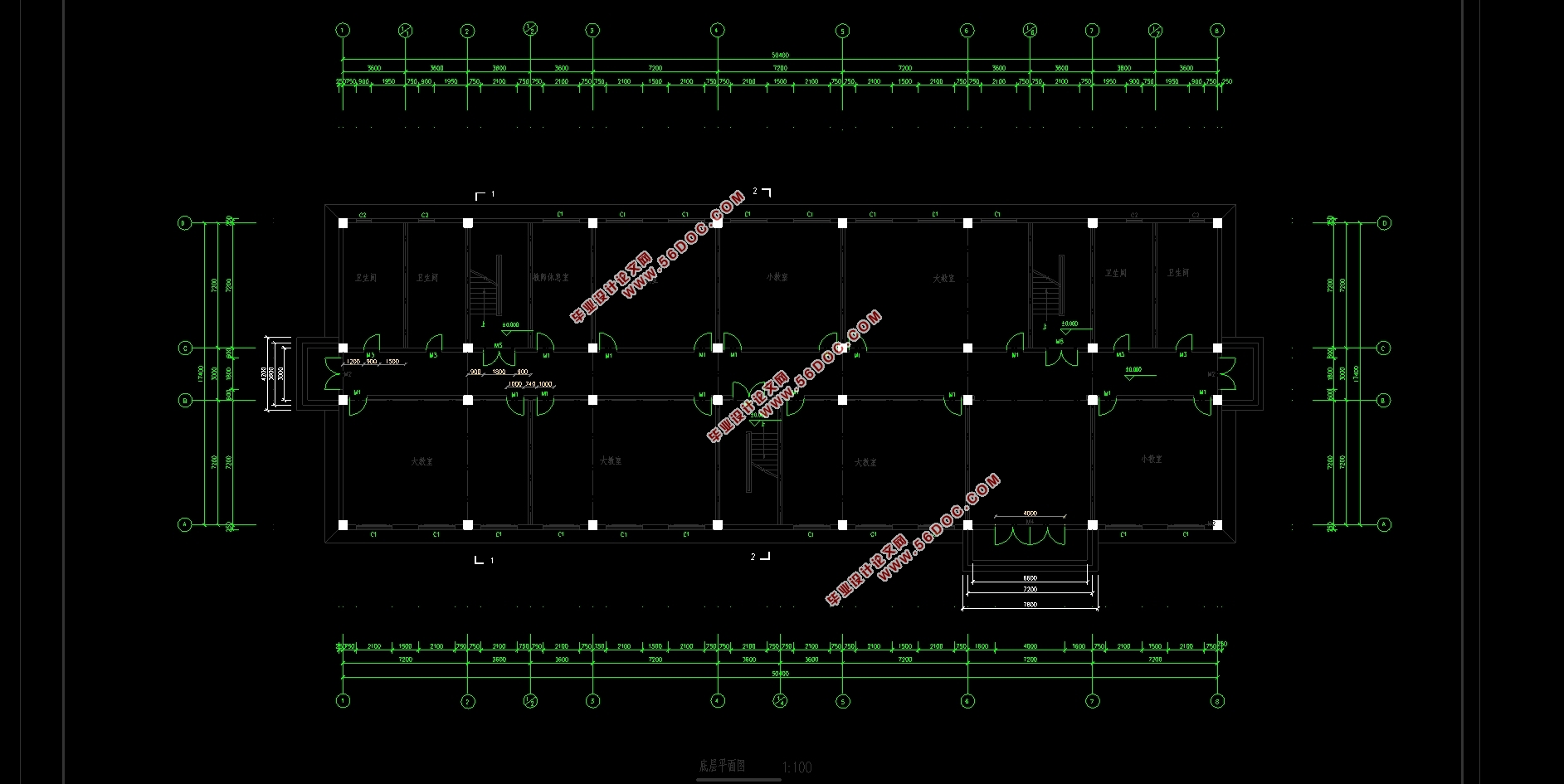
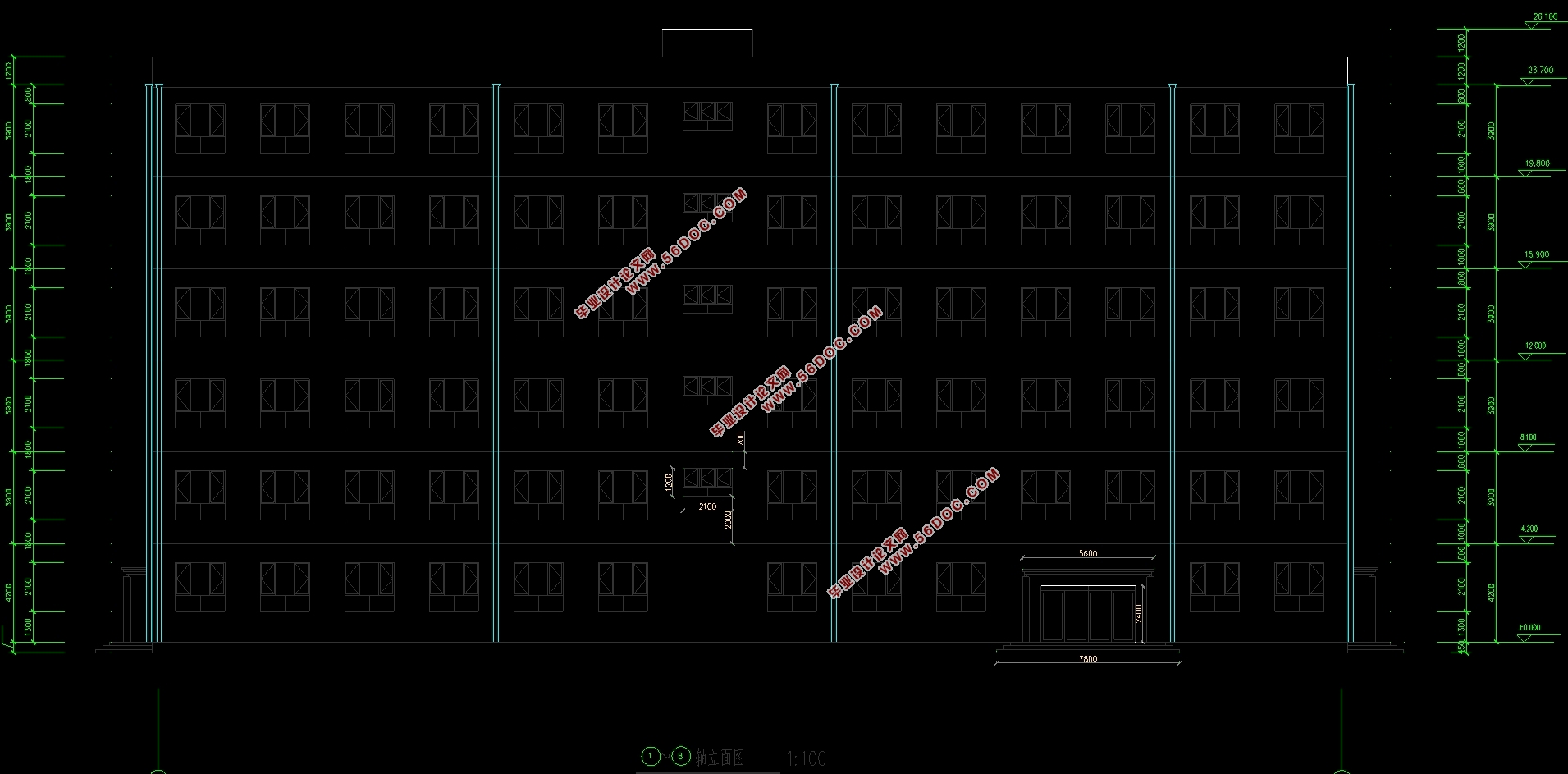

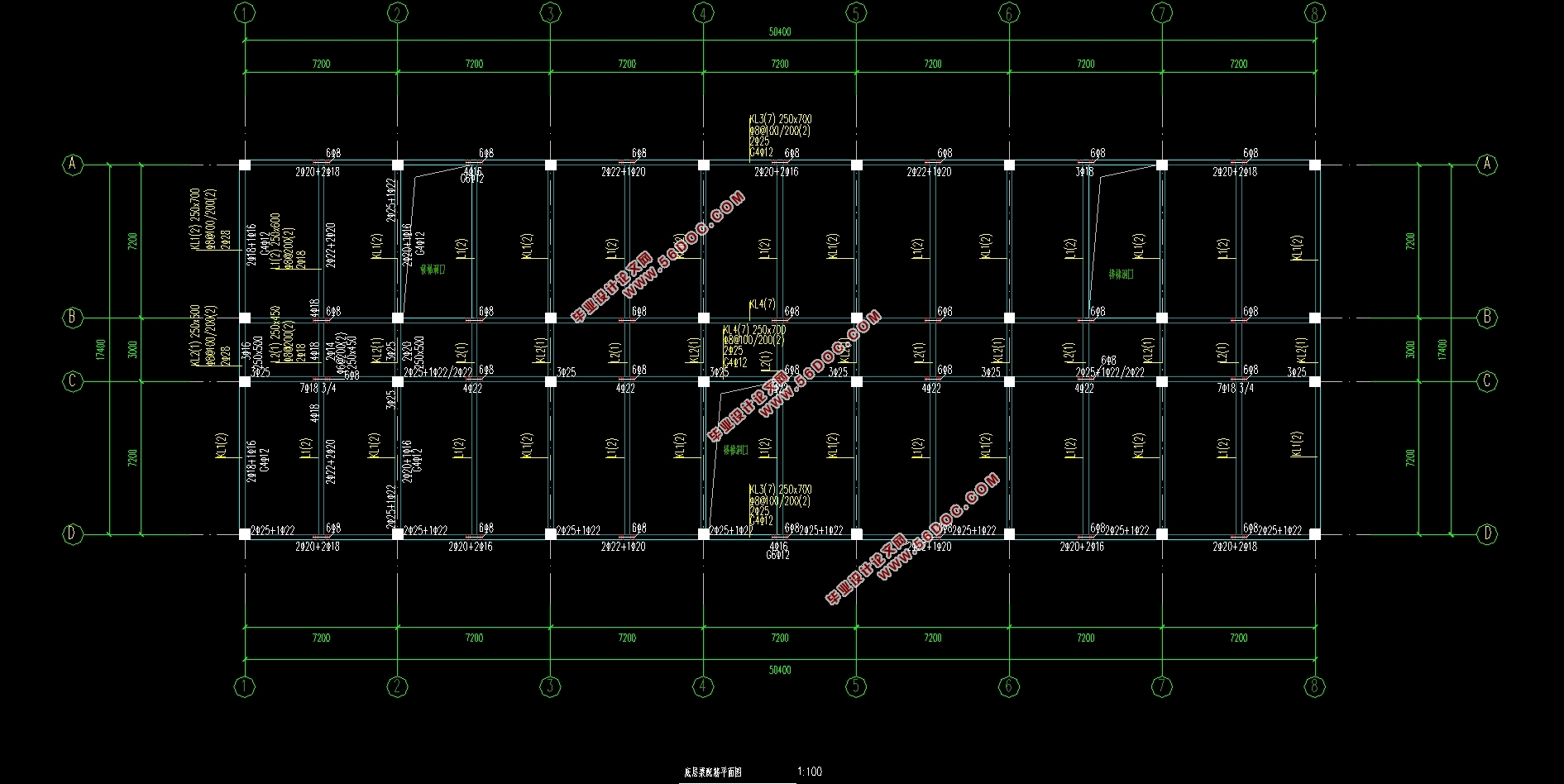
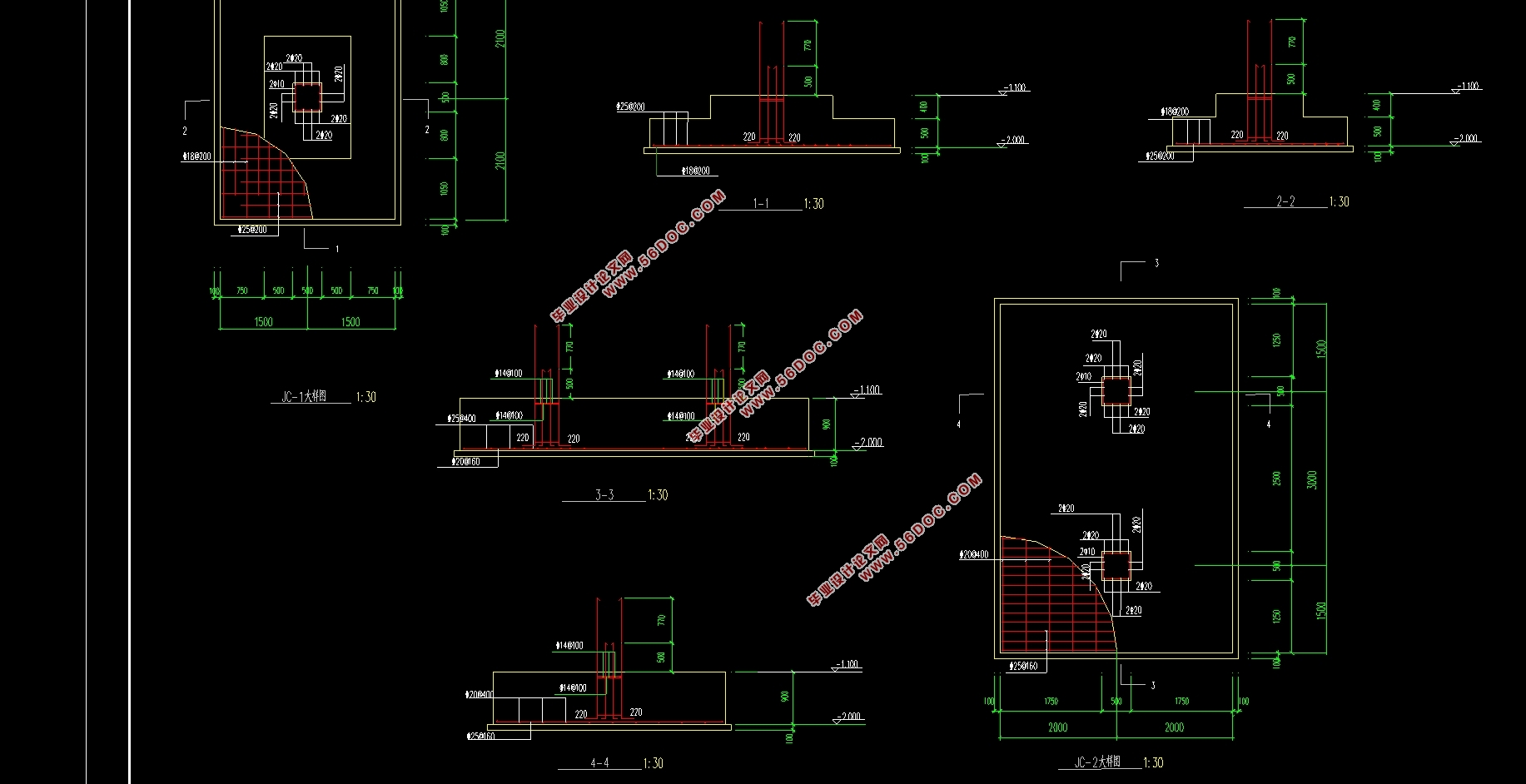

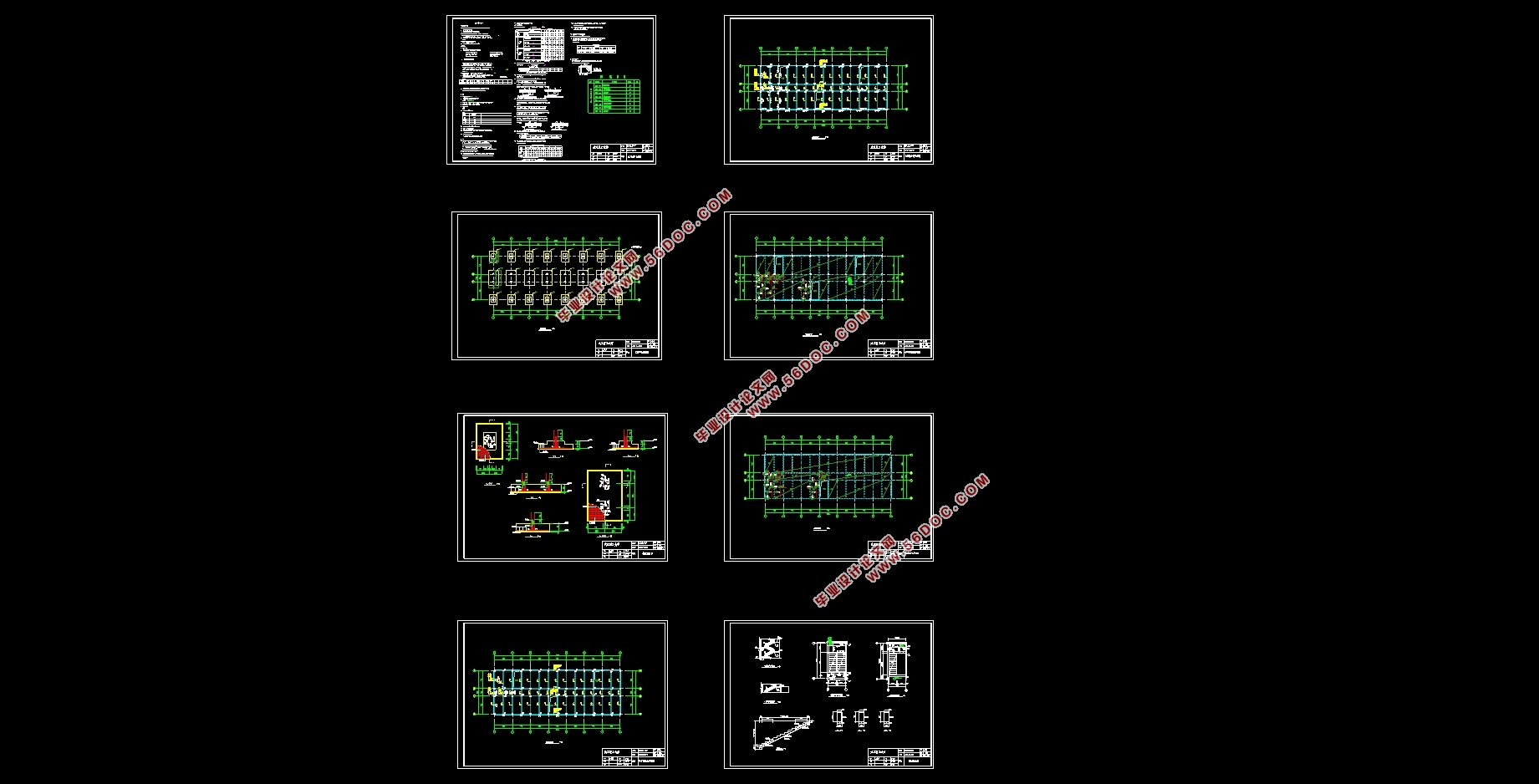

目录
第1章绪论 1
第2章设计基本资料 2
2.1 工程概况 2
2.2 工程资料 2
2.3 建筑做法 2
第3章楼板、框架梁、柱、截面尺寸的初步估定 3
3.1 楼板厚度 3
3.2 框架梁截面尺寸 3
3.3 框架柱截面尺寸 4
第4章结构布置及计算简图 5
4.1 柱网布置 5
4.2 框架结构计算简图及计算单元 5
第5章重力荷载代表值的计算 7
5.1 屋面及楼面恒荷载计算 7
5.2 墙,门,窗重力荷载计算 7
5.2.1 墙体荷载 7
5.2.2 门窗荷载 8
5.3 梁柱自重计算 8
5.3.1 梁柱平面布置图 8
5.3.2 单位长度梁柱荷载 8
5.4 门窗洞口面积及自重 9
5.5 重力荷载代表值的计算 10
第6章横向框架侧移刚度的计算 13
6.1 横梁线刚度的计算 13
6.2 纵梁线刚度的计算 13
6.3 柱线刚度的计算 13
6.4 各层横向侧移刚度计算 13
第7章水平荷载下框架内力计算 17
7.1 横向水平地震作用下框架内力分析 17
7.1.1 横向自振周期计算 17
7.1.2 水平地震作用及楼层剪力的计算 18
7.1.3 水平地震作用下的位移验算 20
7.1.4 水平地震作用下的框架内力计算 21
7.2 风荷载下框架内力计算 26
7.2.1风荷载计算 26
7.2.2 侧移刚度D 27
7.2.3 风荷载作用下框架侧移计算 27
7.2.4 横向框架风荷载作用下的内力计算 28
第8章竖向荷载下框架内力计算 31
8.1 计算单元 31
8.2 计算简图 32
8.3 荷载计算 33
8.3.1 恒荷载计算 33
8.3.2 活荷载计算 35
8.4 框架内力计算 36
8.4.1 恒载作用下梁固端弯矩 36
8.4.2 活载作用下内力计算 37
8.4.3 分层法计算梁柱弯矩 37
8.4.4 梁端剪力及柱轴力计算 45
第9章横向框架内力组合 50
9.1 结构抗震等级 50
9.2 框架梁内力组合 50
9.2.1 梁弯矩组合计算 50
9.2.2 梁剪力组合计算 59
9.2.3 梁强剪弱弯调整 64
9.2.4 梁的内力组合汇总 65
9.3 框架柱内力组合 67
9.3.1 柱轴力组合计算 67
9.3.2 柱弯矩组合计算 75
9.3.3 柱的剪力计算 83
第10章截面设计 85
10.1 框架梁 85
10.1.1 梁正截面受弯承载力计算 85
10.1.2 梁斜截面受剪承载力计算 90
10.2 框架柱 94
10.2.1 剪跨比和轴压比验算 94
10.2.2 柱正截面承载力计算 96
10.2.3 柱斜截面受剪承载力计算 107
10.3 板 110
第11章楼梯设计 115
11.1底层楼梯设计 115
11.1.1 梯段板TB1设计 115
11.1.2 平台板PTB1设计 116
11.1.3 平台梁TL1设计 117
11.2 其他层楼梯设计 118
11.2.1 梯段板TB2设计 118
11.2.2 平台板PTB2设计 119
11.2.3 平台梁TL2设计 119
11.2.4 平台梁TL3设计 121
第12章基础设计 123
12.1 A、D柱下独立基础 123
12.1.1 示意图 123
12.1.2 设计参数 123
12.1.3 尺寸确定 124
12.1.4地基承载力及基础冲切验算 125
12.1.5 基础底板配筋计算 127
12.2 B、C 轴下联合基础设计 129
结束语 133
参考文献 134
致谢 135
|
